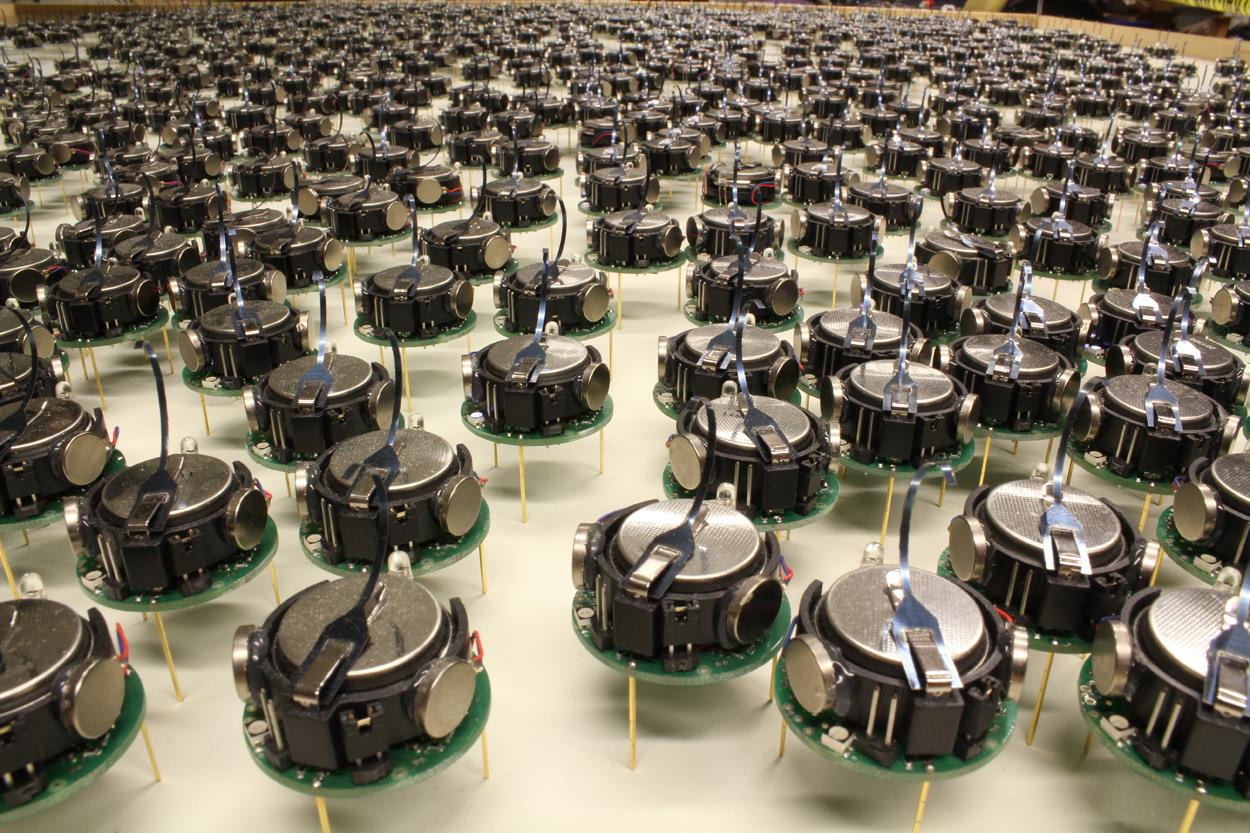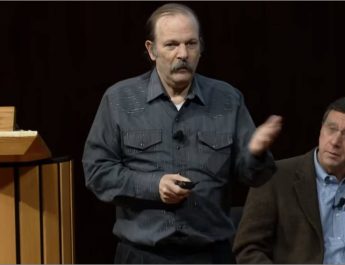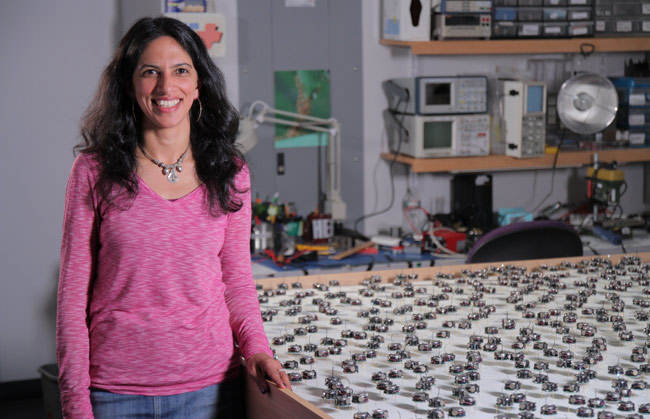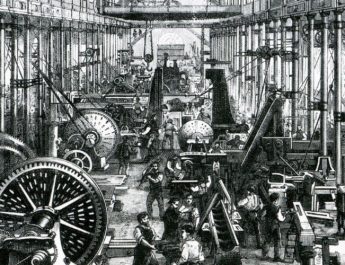Harvard in Boston becomes the epicenter of The Next Generation Robotics with Artificial Intelligence: Smarter, Smaller, Softer, Safer and Bioinspired. The Bioinspired Robotics platform at Harvard Wyss Institute for Biologically Inspired Engineering looks into Nature to obtain insights for the development of new robotic components that are smarter, softer, and safer than conventional industrial robots.
By looking at natural intelligence, collective behavior, biomechanics, and material properties not found in manmade systems, scientists at the Wyss Institute and around the world are building new kinds of robots like insect-inspired robots and autonomous self-driving cars that can co-exist and coordinate with humans. In the future, researchers envision humans and robots will interact in ways we never previously imagined.
Harvard Robotics and Artificial Intelligence(AI) faculty discuss their research and the opportunities in the next generation Robotics and the Natural Intelligence.
Robert Wood, Ph.D. Core Faculty Member, Wyss Institute
Professor, Harvard Paulson School
“If I asked you to close your eyes and think about a robot, maybe you envision something like this..Maybe we want to think about robotics from a different perspective.”

Conor Walsh,Ph.D.Core Faculty Member, Wyss Institute
Professor, Harvard Paulson School
“Robotics of the field really started in industrial settings where very precise and fast motion was needed. Those same technologies are not really suitable for interacting with people.”
What if robots were biologically inspired?
Radhika Nagpal,Ph.D.Core Faculty Member, Wyss Institute
Professor, Harvard Paulson School
“When we think of biorobotics, we really think of something that’s more like the field of AI of artificial intelligence thinking about that combination of both the body and the brain and you know the group. There’s just a lot of examples in biology where we can see how that can be achieved and how we can leverage the same kinds of ideas.”

Koichi Suzumori, Ph.D. Professor, Tokyo Institute of Technology
I think biorobotics is a new discipline connecting living creatures and robots.
Homayoon Kazerooni, Ph.D. Professor, University of California, Berkeley
Take a look at nature. See how nature does things.
David Reinkensmeyer, Ph.D. Professor, University of California, Irvine
Looking at design principles in nature and trying to build robots that either implement those principles or interact with those principles.
Zivthan Dubrosvsky, M.S. Bioinspired Robotics Platform Lead, Wyss Institute
Looking at humans, looking at biomechanics, looking at the materials of existing nature, looking at the algorithms that nature uses..

Radhika Nagpal,Ph.D.Core Faculty Member, Wyss Institute
Professor, Harvard Paulson School
“What is intelligence? What is the technology that’s going to make us be able to understand what biology already has?”
Barry Trimmer, Ph.D. Professor, Tufts University
“Hopefully, it’s not just inspiration but actually bio inform that we take what we learn from animals and use it in applying those techniques to robots.”
Almost all locomoting robots and many of the manipulator robots are inspired by these soft animals that we’re familiar with.
Robert Wood, Ph.D. Core Faculty Member, Wyss Institute
Professor, Harvard Paulson School
“If we wanted to make robot that were acted some way like this, how would we do this? So compared to more traditional robots and things that are welding the door is done on your car and assembly line. We’re making robots which are inherently safer to interact with. Because they’re soft or they’re small and because of their size or because of their compliance and ability to adapt to sort of natural environments can perform tasks that are difficult or impossible with other classes of robots.”
“Take for example the ROBO-BEE Project which is the goal of creating a colony of autonomous robotic insects. There’s nothing off-the-shelf which is going to be used for any of the components since we have to reinvent every feature of this robot and along the way how new new technologies that are developed in this program.”

Radhika Nagpal,Ph.D.Core Faculty Member, Wyss Institute
Professor, Harvard Paulson School
“Many of the people in our field are inspired by the incredible ability of biological systems to cooperate. If we think of swarms in nature let’s say you think of termites that build mounds or you think of ant colonies that can forage over large regions.”
“Imagine being able to create robotic systems that could be those tasks. So could I make robots that build? Could I make robots that could go through a coral reef and monitor the health of a system?”
“If you think about traffic and self-driving cars as soon as you have a lane full of self-driving cars, you have a lot of robots on the road. So if we can both an algorithmic understanding, how do you have large scalable collectives work together in a decentralized way? And they’re going to be slightly faulty and they’re going to have low capabilities as opposed to the absolute perfect robot that can perfectly navigate through some complex environments.”
“That’s a really amazing manufacturing technology. Because you could mass manufacture simple things and then those simple things would cooperate and create something of a much higher complexity.”
Manuela Veloso, Ph.D. Professor, Carnegie Mellon University
“What we are aiming at the robotics is really this cause of death where humans and robots can co-exist, can coordinate, can distribute tasks to the joint benefit of all.”
Koichi Suzumori, Ph.D. Professor, Tokyo Institute of Technology
“As we you know, they’re many big differences between the driving mechanism use of current robots and the human body.”
Conor Walsh,Ph.D.Core Faculty Member, Wyss Institute
Professor, Harvard Paulson School
“So we’re working on software of robots to both enhance and augment the ability of healthy individuals and then we’re trying to apply the same technology to people who have some kind of physical disability. People have designed wearable robotics and they’ve tried to think that Henry Gibson superhuman strength.”
“What we believe is that there’s a lot of people with some kind of disability. You don’t need superhuman strength but just need a small amount of assistance. But that small amount of assistance can have a pretty big impact in their quality of life. So, we’re trying to take a new approach and say hey we design new robotic components that are using soft material to be able to apply forces to a person and what ain’t the must and the kinematic restrictions associated with rigid devices.”

David Reinkensmeyer, Ph.D. University of California,Invine
“There’s a potential does like really help people who have their injuries.”
Conor Walsh,Ph.D.Core Faculty Member, Wyss Institute
Professor, Harvard Paulson School
“Taking in an unconventional approach you’re not saying okay how do we improve them status quo it’s saying and we basically take a fundamental leap.”
Radhika Nagpal,Ph.D.Core Faculty Member, Wyss Institute
Professor, Harvard Paulson School
“We can push all these different fronts but somewhere behind it. There are core ideas that we can share like how do you produce autonomy. What are the sensing technologies that we work? Can we make softer robots?”
Robert Wood, Ph.D. Core Faculty Member, Wyss Institute
Professor, Harvard Paulson School
“What we’re trying to do is make robots smaller, softer, safer.”
“The line between person and robot get blurred work where people are interacting with robots in ways that they never imagined.”
Robert Wood, Ph.D. Core Faculty Member, Wyss Institute
Professor, Harvard Paulson School
“These are ways that will have profound impacts on our lives in the future robotics available to them”




